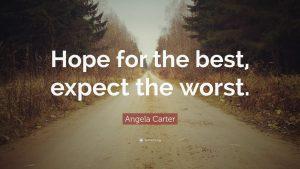Hi Ray,
Thank you so much for your interest in the Product Manager position at XYZ Company. Unfortunately, we have decided not to proceed with your candidacy as we felt that the Product Manager role along with the company stage and supporting team is not the best fit at this moment. We would love for you to apply again in the future as our company is rapidly changing.
Thanks again for your interest in XYZ Company and we wish you the best of luck.
Best,
Josh
The XYZ Recruitment Team
Familiar? Or you’re yet to probably face one. Either way, you would definitely need these pointers to brace yourself. Processing rejections requires some information and strategies; knowledge of behind the scenes and a post-rejection strategy.
Knowledge of what happens behind the scenes of recruitment helps shape your expectations and gives you first hand information on what the recruitment process entails.
With such information on the recruitment process, it becomes easier to handle rejections successfully when you encounter them. In this article, we bring you four (4) steps to help you deal with rejections when they occur.
- Acknowledge and manage your emotions – It really hurts. After putting in all the time and effort with no result to show. It slaps harder when you are close to the finish line. Whichever stage in the recruitment process you get rejected at, you have to come to terms with your emotions when you read the rejection message. The emotion could present as anger or sadness. Staying in the moment and acknowledging these emotions only shows that you are human. It also prepares you for the next steps especially if you hold yourself in check and do not allow these emotions to take over everything.
- Find closure – Anybody that puts in work for their job applications and faces a rejection would want to ask WHY. Finding closure helps you manage your emotions and optimize your next steps. One way to approach this is to assess yourself objectively. Paying close attention to your performance in the recruitment process; right from your CV to performance in interviews, would give you your level 1 closure. Level 2 closure involves taking feedback from interviewers. The life of a recruiter is such that they are constantly engaging with 100s of candidates to fill different roles. You are likely not going to get personalized feedback if you get rejected in the early stages. For example, if a recruiter decides to spend 5 minutes per rejected candidate, and they have 60 candidates rejected (quite low), that is 300 minutes (5 hours) dedicated to just providing feedback. In reality this is difficult to get recruiters to commit to but go ahead and ask anyway. Check this draft out.
Hello Josh,
Thank you for the response. Although I am disappointed that I am not able to join XYZ Company as a Product Manager at this time, I wish you the very best in finding amazing candidates that can continue to drive XYZ Company’s mission forward.
I would still love to be in touch if you don’t mind since I’m still open to a Product Manager role. I realized that you recruit across product, people and some customer facing roles. I am happy to share these roles with people in my network whenever they come up to help XYZ Company achieve its Diversity quotas. Please let me know if it’s okay.
Is there an opportunity to reapply? What does the time window for waiting look like? 3 months, 6 months? I’m eager to know. This might be a big ask Josh, but I will be happy if you can share feedback on how I could have approached this interview better. I’m still in my transition phases and your input will go a long way to support my journey going forward.
I completely understand if my request cannot fit into your priorities right now. Either way, thank you for showing me a lot of kindness.
Enjoy the rest of the week
Regards,
Ray
The blueprint?
First paragraph – Empathize. Lend them your support.
Second paragraph – Offer. Give them solutions to their needs.
Third paragraph – Ask. Find out how you performed.
Fourth paragraph – Empathize. Understand their schedule.
There is a higher chance of getting a response with this approach. Some feedback may be detailed, others may be vague. Irrespective of the outcome, it’s worth giving it a shot.
- Keep the door open – Stay in touch with the recruiter and/or hiring manager or team and maintain some level of visibility. This can be done via LinkedIn or their preferred mode of contact. However, the first thing to do in keeping the door open is bullet #2. You may not be the best fit for the role now but that situation might change in some few months. At that stage, you would need these recruiters to not hesitate to speak to you again.
- Keep Walking – Move on from the emotions and keep your head up. You will need a lot of positive energy to move to the next job you want to apply for while learning from your previous rejection. Staying optimistic, moving again with purpose, righting the wrongs of previous “failed” applications and having a good support system will hack this for you. For me, I tap a lot of support from my sister and mother. You could also tap your support from family and close associates.
With these hacks, I am confident that the next time you face a rejection you will acknowledge your emotions, find closure, keep the door open and keep walking.
We don’t pray for rejections not to come our way. We pray for the strength to be able to scale them when they come around. Catch you later.
NB: Some rejections are not just because you aren’t good. Some behind the scenes elements affect your chances of going all the way to receive an offer.



